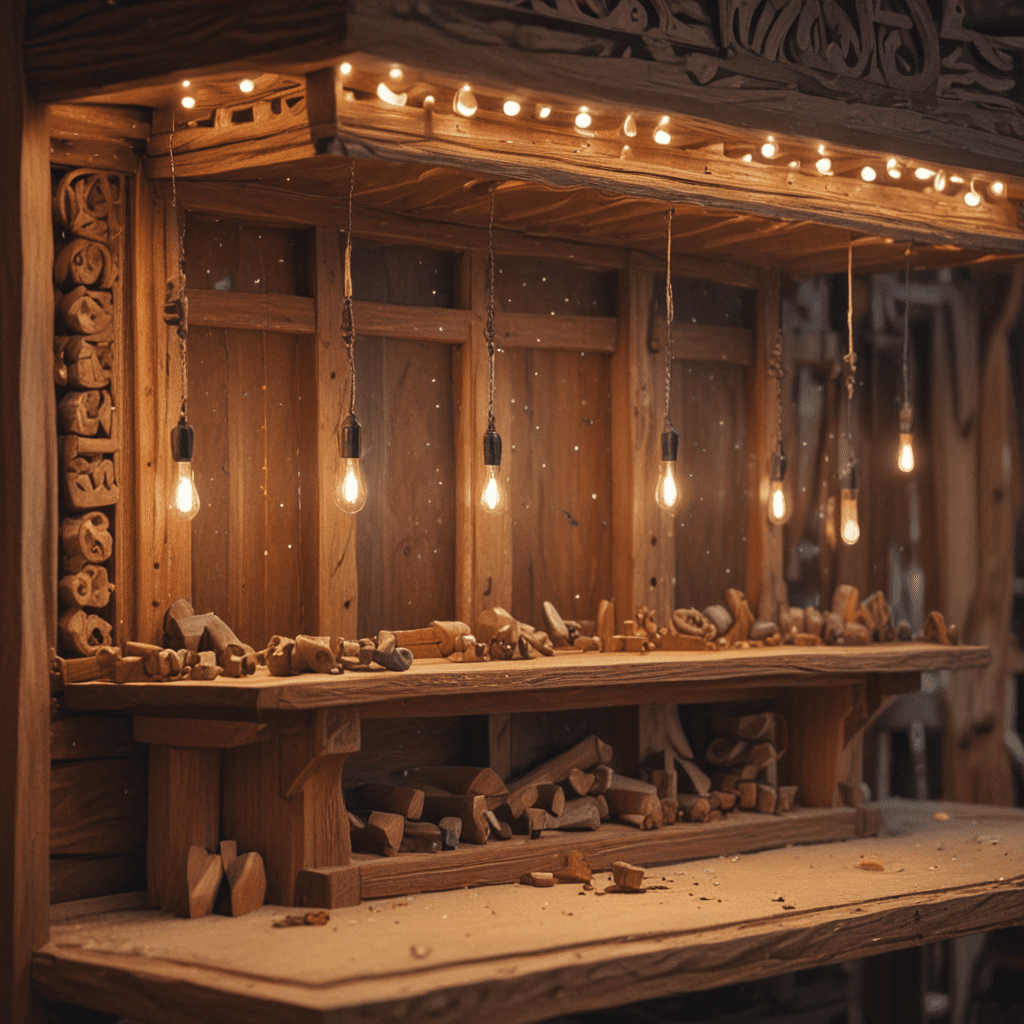Historical Background of Traditional Woodworking in Bangladesh
The rich tradition of woodworking in Bangladesh dates back centuries, with its roots deeply embedded in the country's history and culture. During the ancient and medieval periods, skilled artisans crafted intricate wooden structures, furniture, and everyday objects, showcasing their exceptional craftsmanship. The influence of neighboring regions, such as India and Myanmar, is evident in the diverse woodworking techniques and designs that emerged over time.
Types of Traditional Woodworking
Traditional woodworking in Bangladesh encompasses a wide range of techniques and styles, each catering to specific purposes and aesthetics. Common types include:
- Furniture Making: Artisans create beautiful and functional furniture pieces, including beds, chairs, tables, cabinets, and decorative items.
- Boat Building: Bangladesh's vast network of rivers and waterways has fostered a thriving boat-building industry, with skilled craftsmen constructing traditional wooden boats for fishing, transportation, and recreation.
- Architectural Structures: Wood has been extensively used in the construction of traditional houses, temples, and other architectural marvels, showcasing the structural and aesthetic prowess of Bangladeshi woodworkers.
- Musical Instrument Making: Skilled artisans craft a variety of musical instruments using wood, including drums, flutes, and stringed instruments like the ektara and dotara.
- Carving and Sculpture: Woodcarving is a highly specialized art form, with artisans creating intricate sculptures, decorative panels, and other ornamental pieces.
Tools and Materials
Traditional woodworking in Bangladesh relies on a diverse range of tools and materials. Artisans use hand tools such as saws, chisels, and hammers, as well as locally sourced wood species like teak, mahogany, and sal. These durable and versatile woods provide the strength and beauty necessary for various woodworking projects.
Cultural Significance
Woodworking holds immense cultural significance in Bangladesh. It is an integral part of the country's heritage, traditions, and daily life. Wooden artifacts, structures, and musical instruments play vital roles in religious ceremonies, festivals, and cultural performances. Woodworking is not merely a craft but an expression of Bangladeshi identity and creativity.
Preservation and Revitalization
In recent years, there has been a growing awareness of the importance of preserving and revitalizing traditional woodworking techniques in Bangladesh. Government initiatives and NGOs are working to support artisans, establish training centers, and promote the use of traditional woodworking skills in contemporary designs. Preserving this heritage ensures the continuity of cultural traditions and supports the livelihoods of skilled craftspeople.
Economic Importance
Traditional woodworking is an essential part of Bangladesh's economy, providing employment and income for a significant number of artisans. The sale of wooden products, including furniture, boats, and decorative items, contributes to the local and national economy. Additionally, the tourism industry benefits from the presence of traditional woodworking villages, where visitors can witness the skills of master craftsmen firsthand.
Contemporary Adaptations
While traditional woodworking techniques are highly valued, contemporary adaptations are emerging to meet changing needs and preferences. Artisans are incorporating modern designs and materials into their work, creating innovative pieces that blend tradition with contemporary aesthetics. These adaptations ensure that traditional woodworking remains relevant and continues to flourish in the modern world.
Conclusion
Traditional woodworking in Bangladesh is a testament to the country's rich cultural heritage and the exceptional skills of its artisans. From intricate furniture to architectural wonders, wooden creations have shaped Bangladesh's history, culture, and economy. Ongoing efforts to preserve and revitalize these techniques ensure that this vibrant tradition continues to thrive for generations to come.
Frequently Asked Questions
What are the most common types of wood used in traditional Bangladesh woodworking?
Teak, mahogany, and sal are widely used for their durability and aesthetic appeal.What are some traditional woodworking tools used in Bangladesh?
Artisans use hand tools such as saws, chisels, and hammers, along with locally sourced wood species.How is traditional woodworking preserved and revitalized in Bangladesh?
Government initiatives and NGOs support artisans, establish training centers, and promote the use of traditional techniques in contemporary designs.
What are some contemporary adaptations in traditional Bangladesh woodworking?
Artisans incorporate modern designs and materials into their work, creating innovative pieces that blend tradition with contemporary aesthetics.What is the economic significance of traditional woodworking in Bangladesh?
Woodworking provides employment and income for a significant number of artisans and contributes to the local and national economy.


